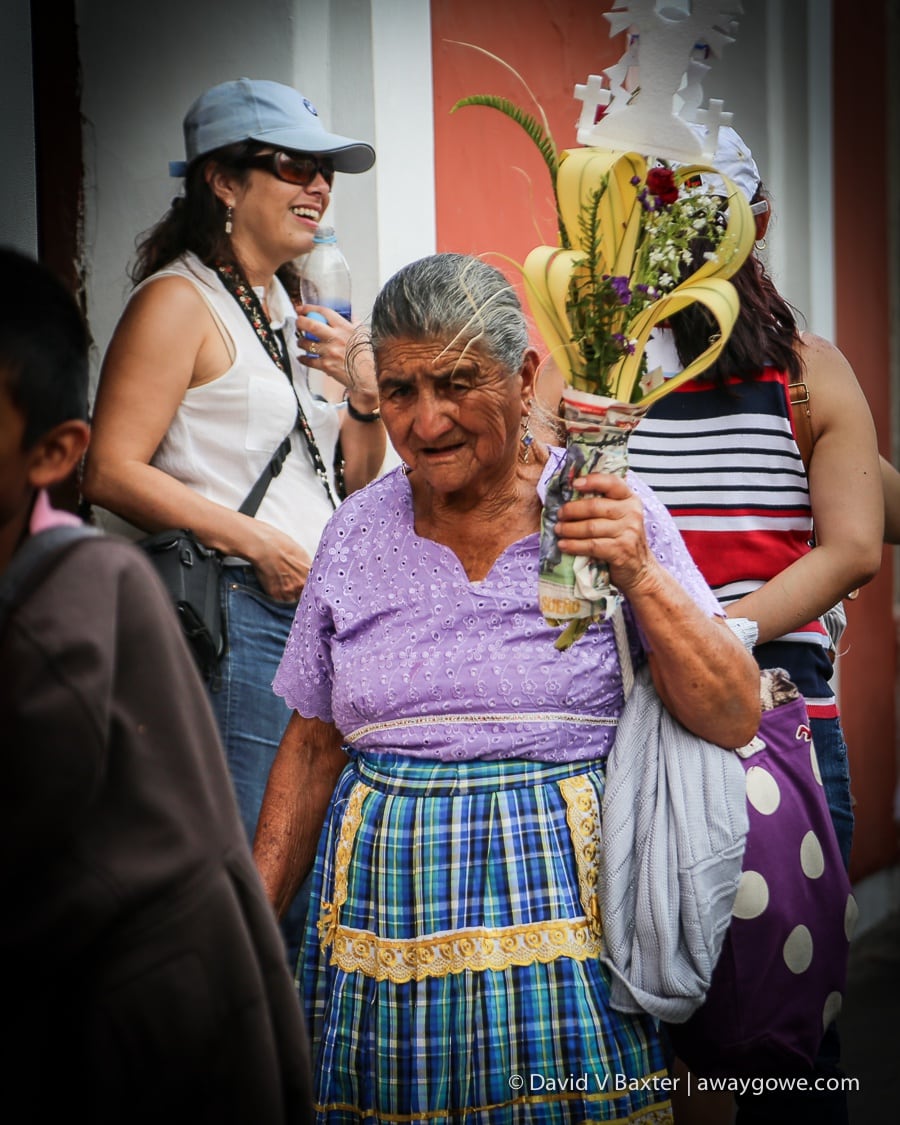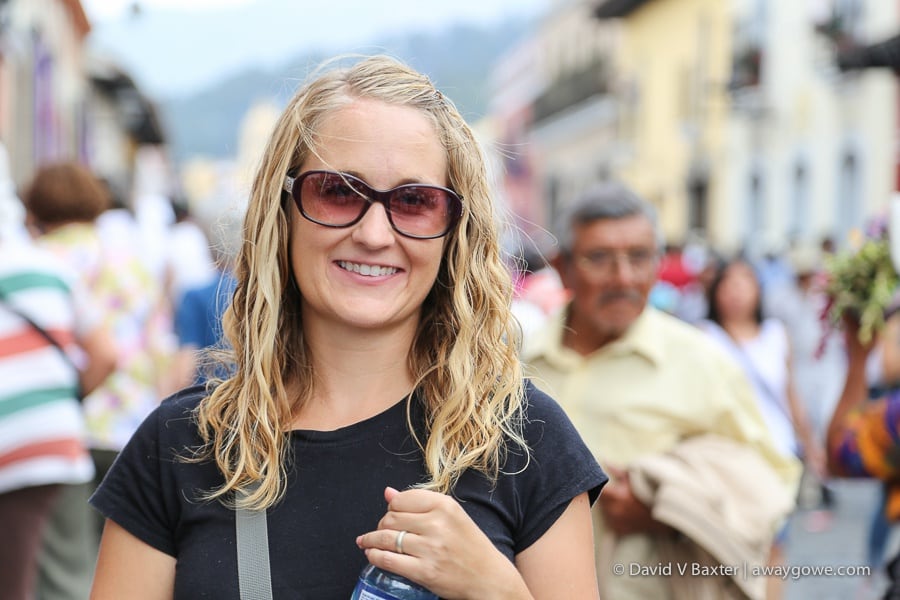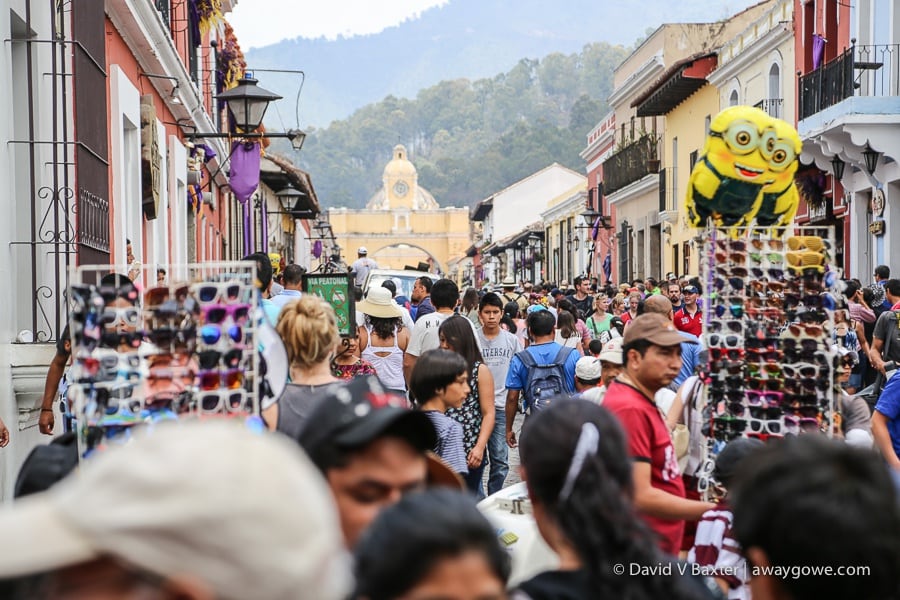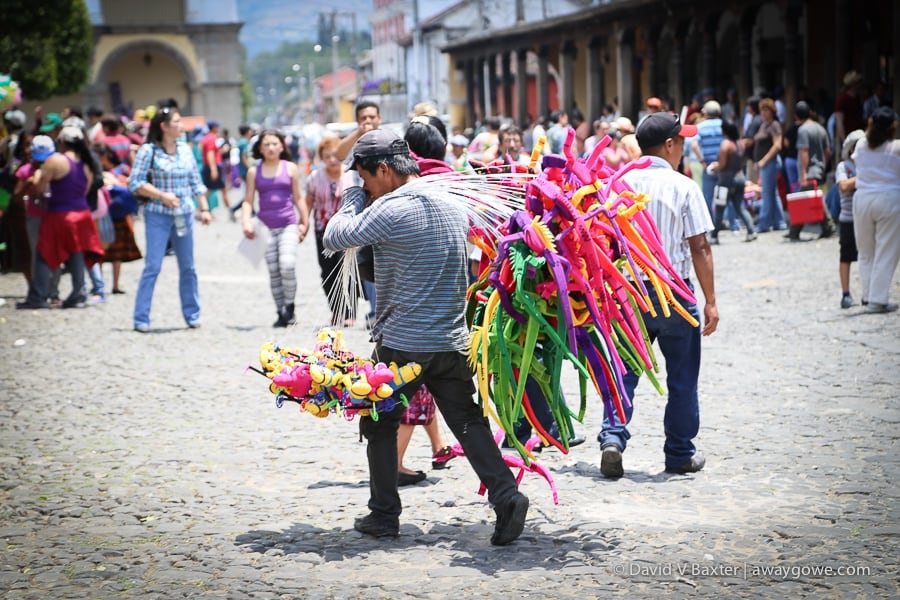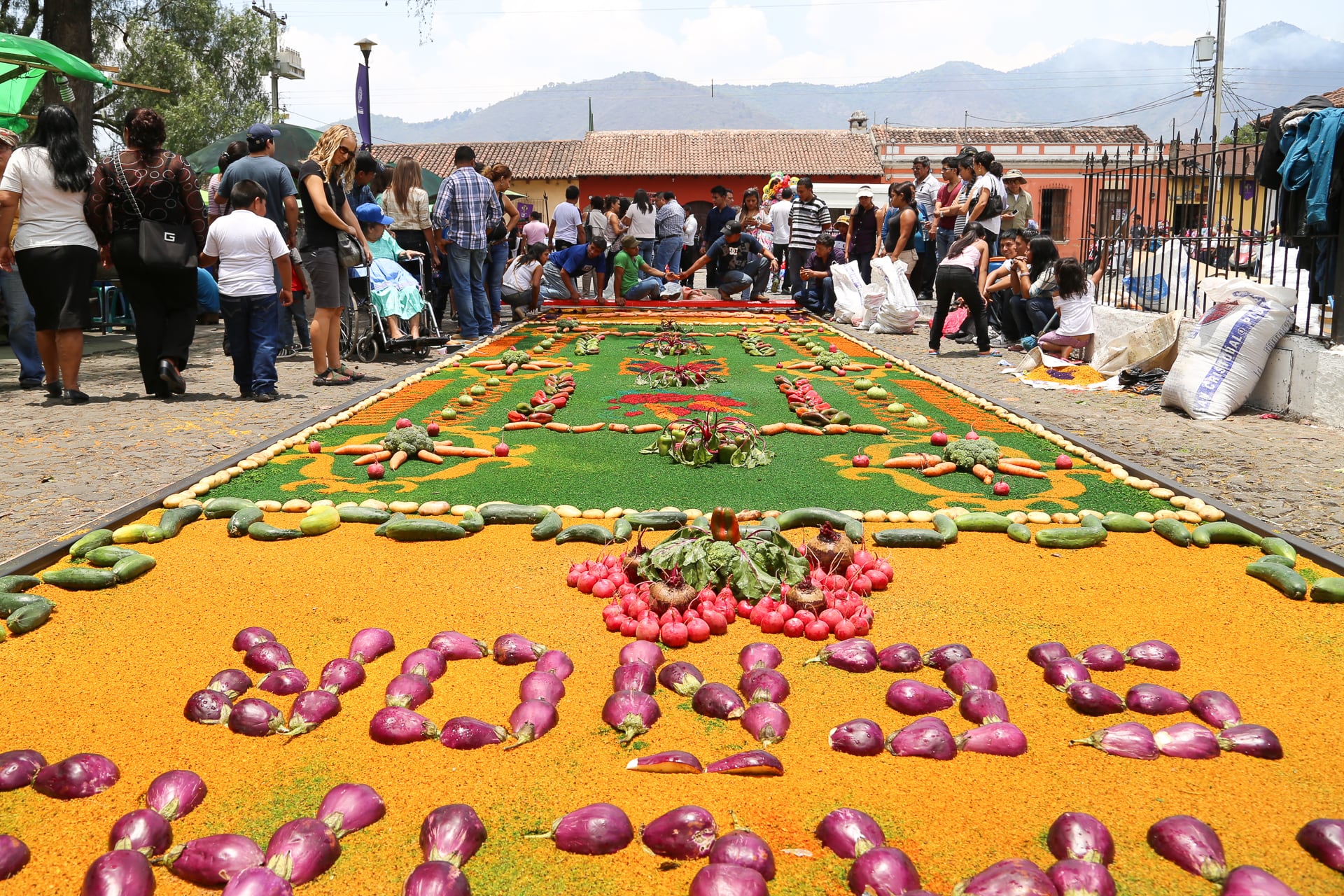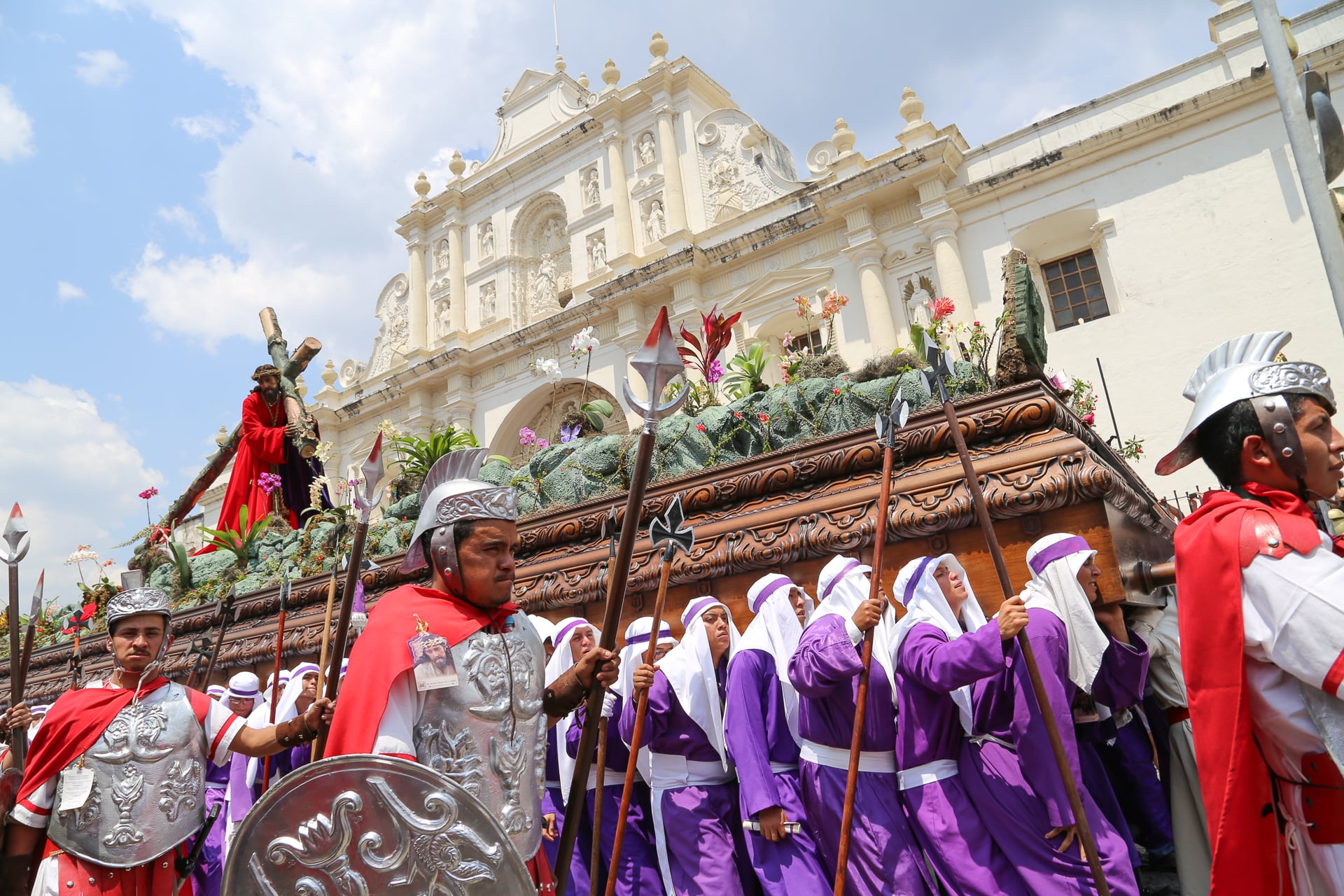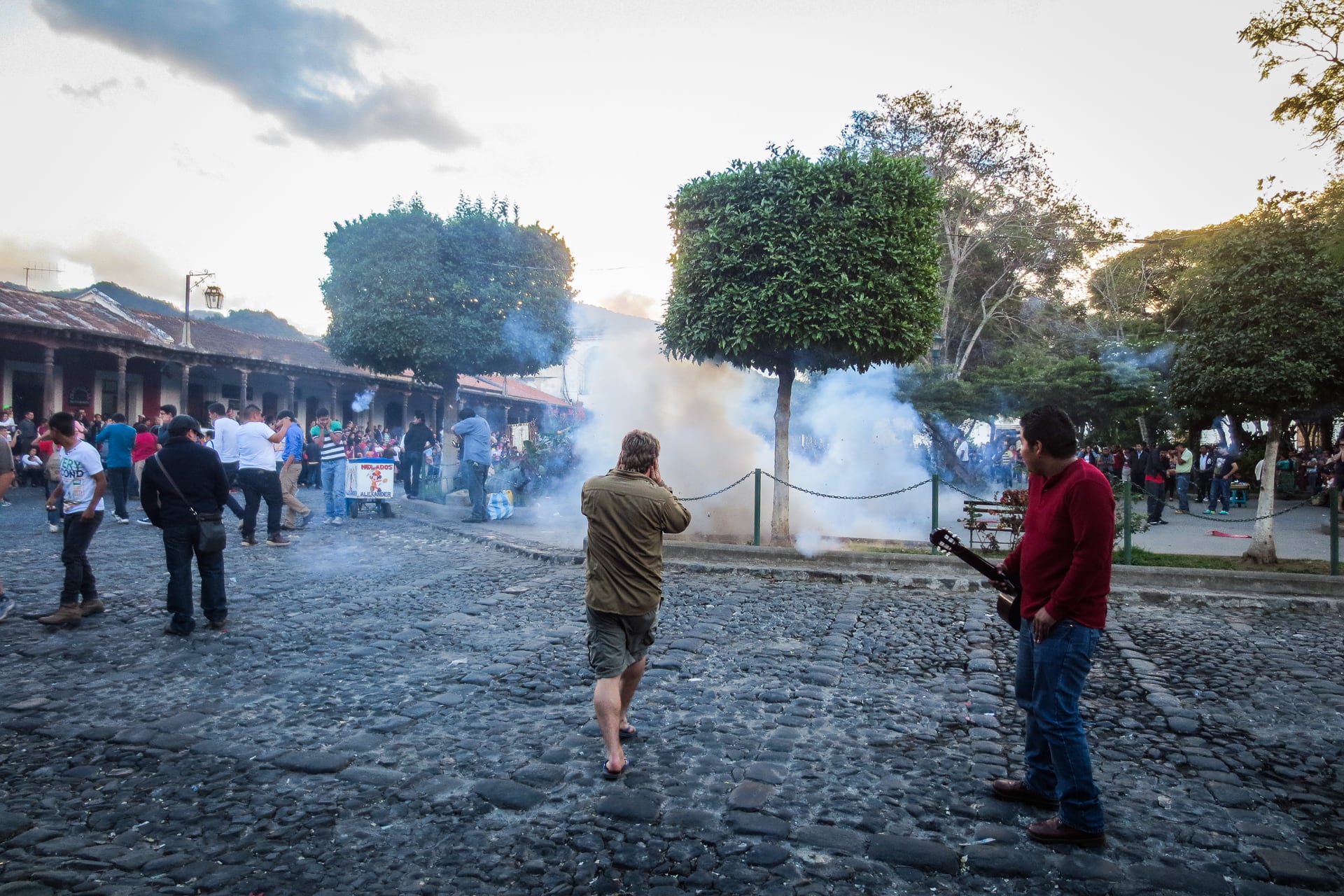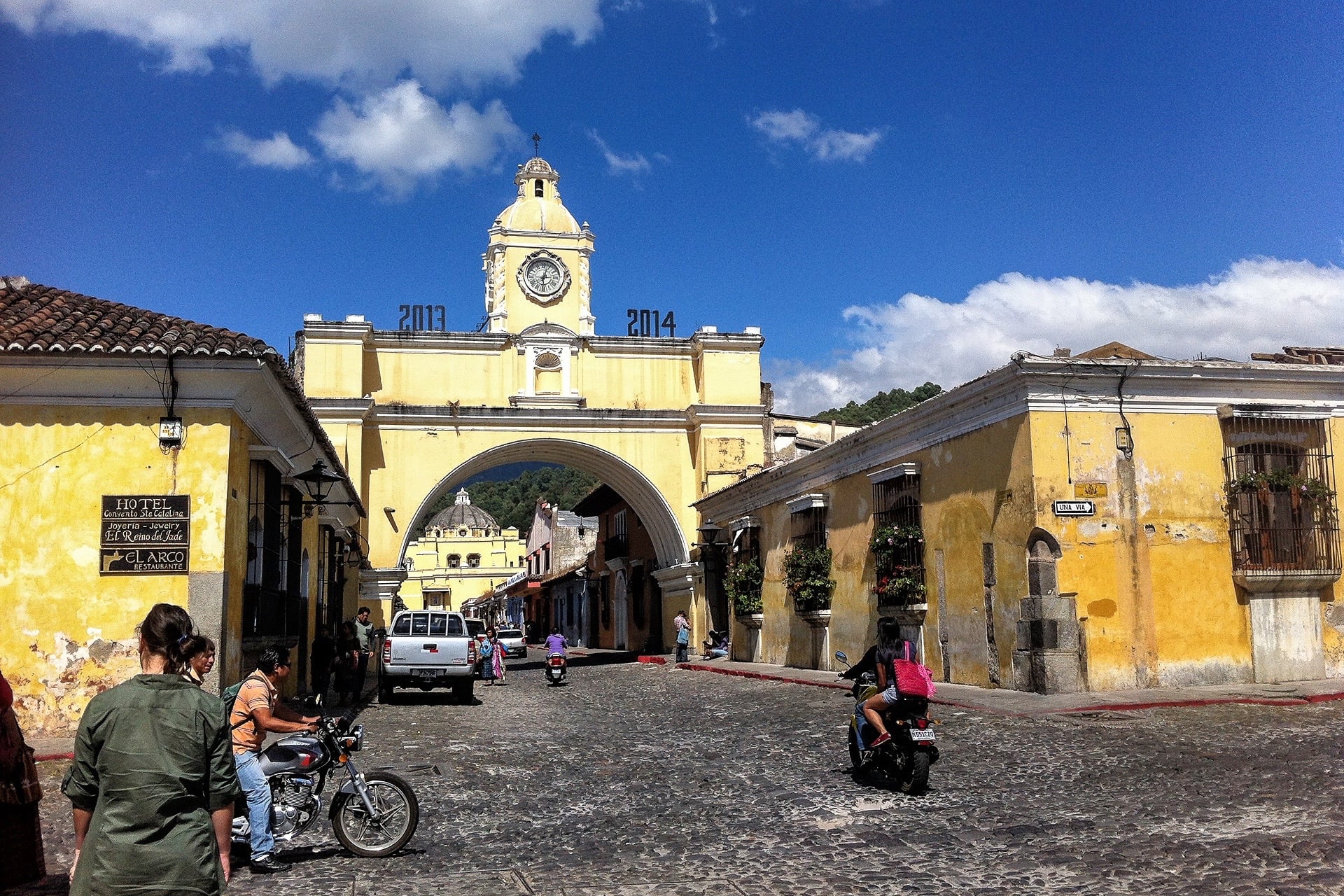This post is the first in a series of photo essays covering Semana Santa (Easter Holy Week) in Antigua, Guatemala.
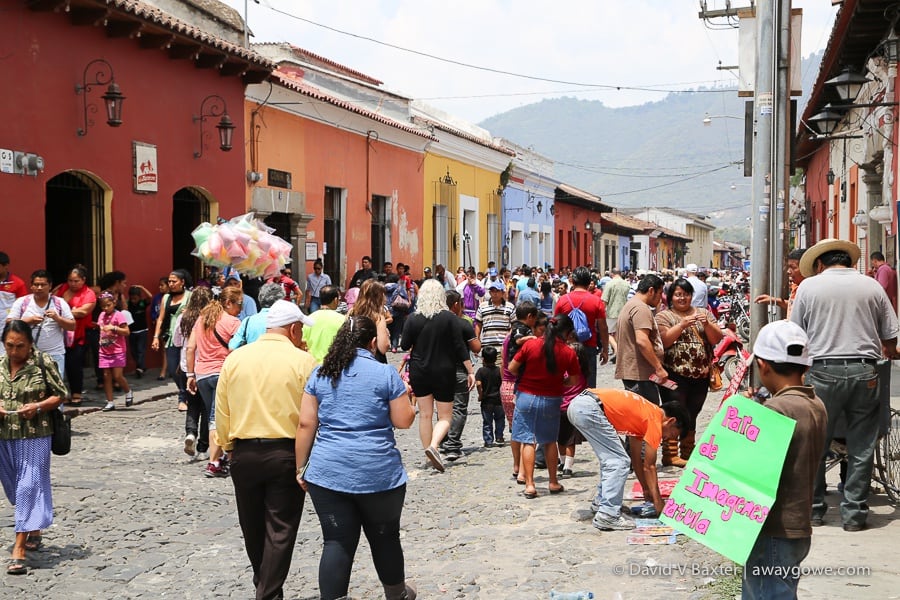
Pilgrims and spectators flock from all over Guatemala (and the world) to take part in the festivities. Antigua during Holy Week can be both an absolute madhouse or calm and tranquil, depending on how far you are from the procession route.
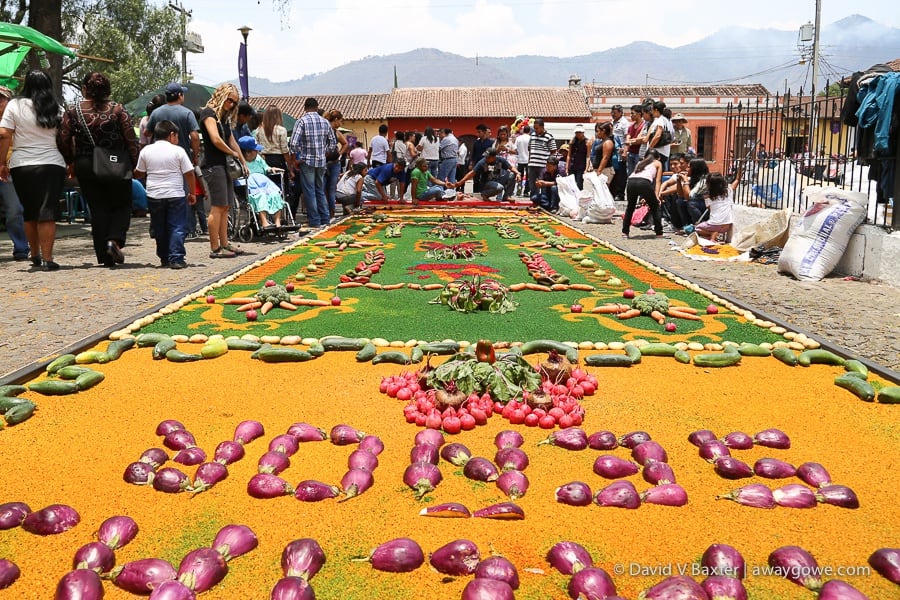
The “alfombra,” literally meaning “carpet” in Spanish, is the center piece of Holy Week (Easter) festivities throughout Guatemala, but particularly in the old World Heritage city of Antigua Guatemala.
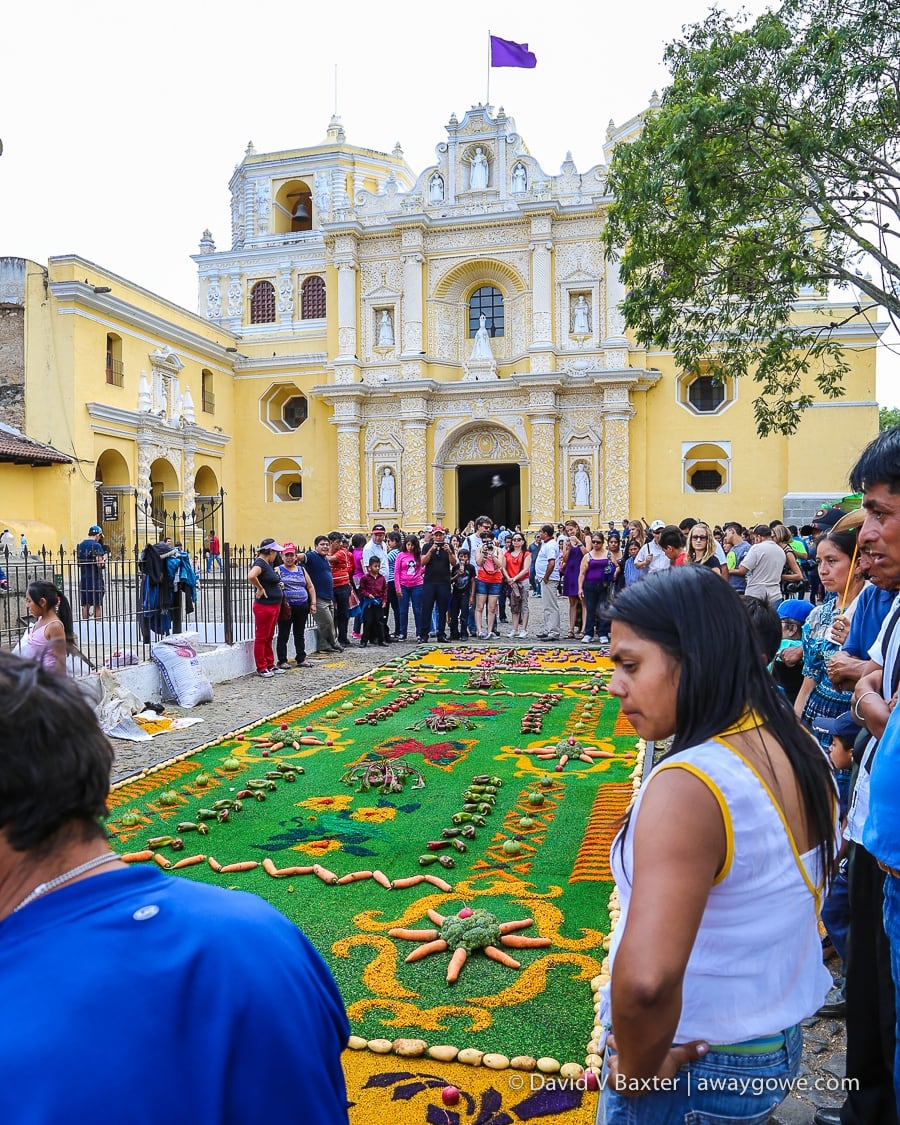
These fleeting masterpieces are painstakingly assembled throughout the week. Often, the most intricate alfombras are assembled in front of Antigua’s most celebrated churches and cathedrals.
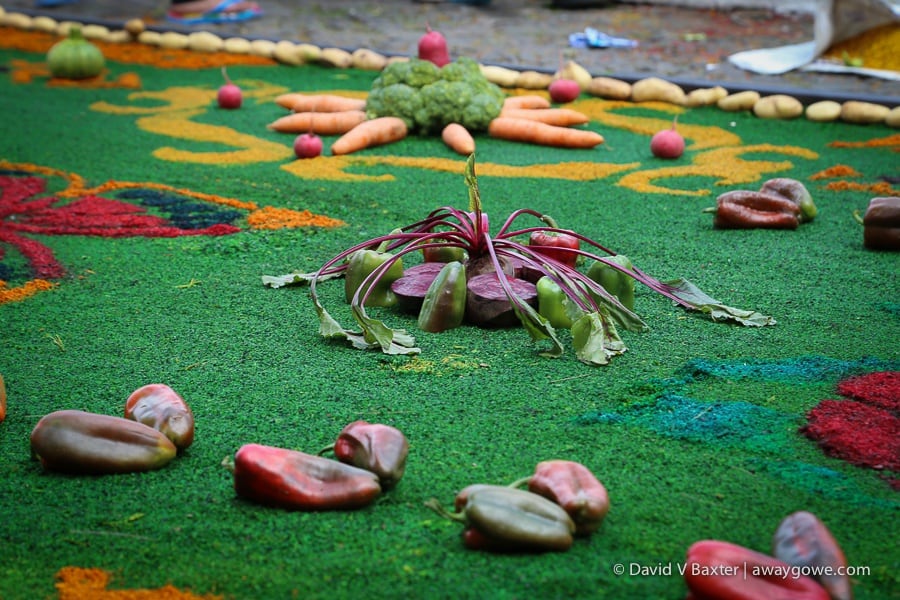
The base material for the Holy Week Alfombra is fine sawdust colored with powder dyes. However, some of the alfombras incorporate other material such as fresh vegetables. We were told that these are some of the most expensive, costing hundreds of dollars (USD) to construct.
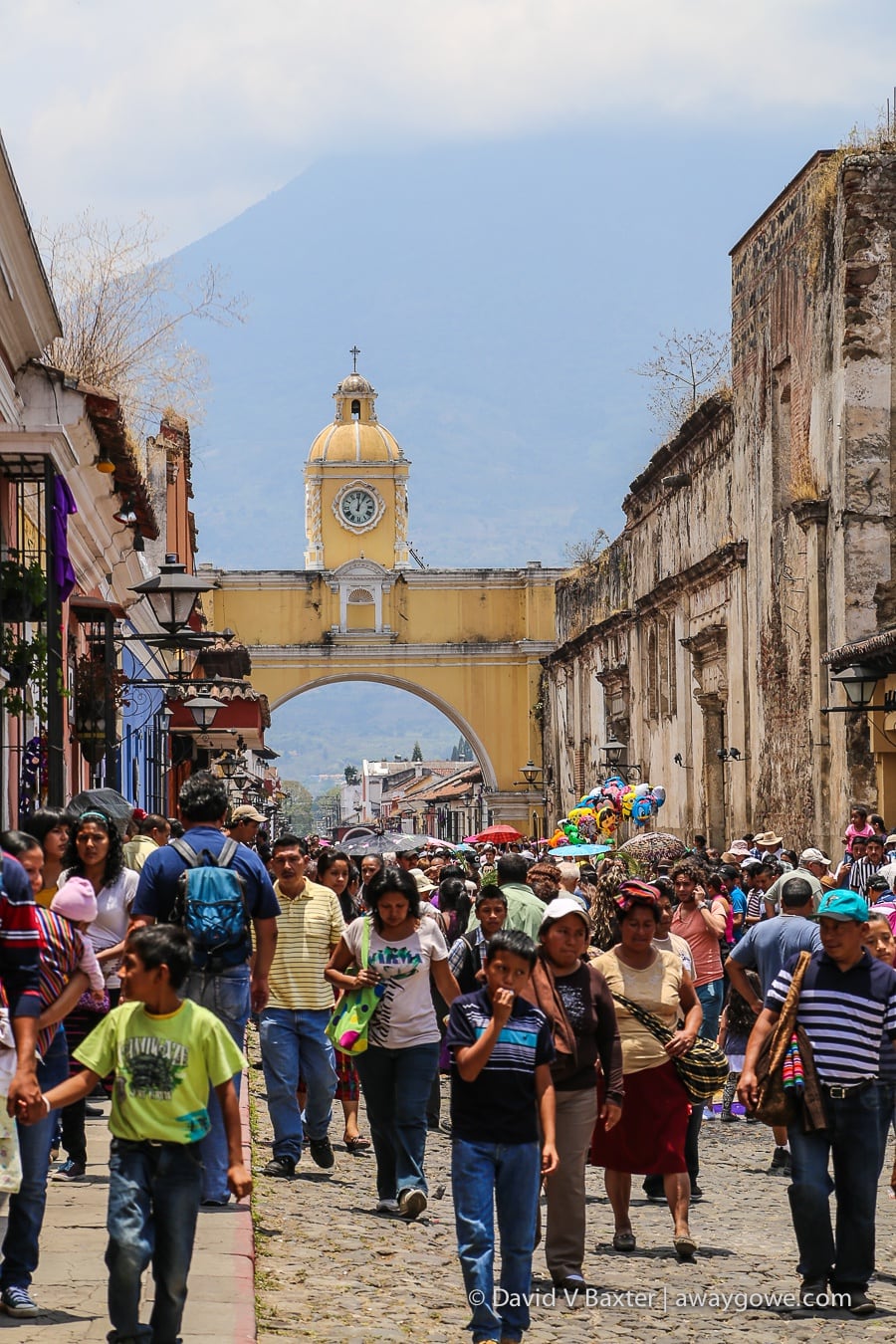
The Arco de Santa Catalina, perhaps Antigua’s most distinguishing landmark, is always on the procession route.
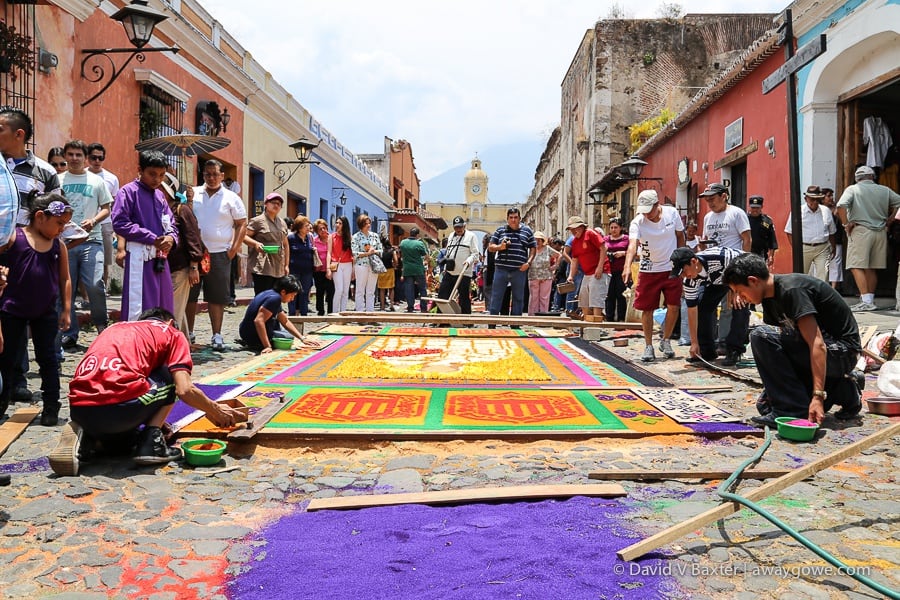
Intricately carved wooden stencils are used for creating the multi-colored designs, which employ a layering process of one color of sawdust over another. Some stencils are passed down generations.
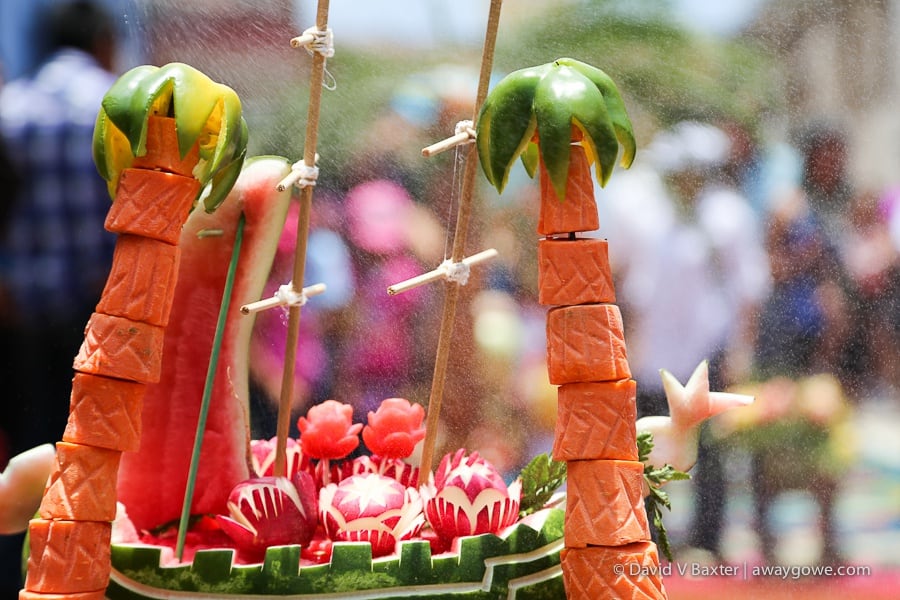
Often, artists will get creative with the materials at hand, particularly vegetables. Alfombras must constantly be sprayed down to keep the wind from blowing away the sawdust and ruining the designs.
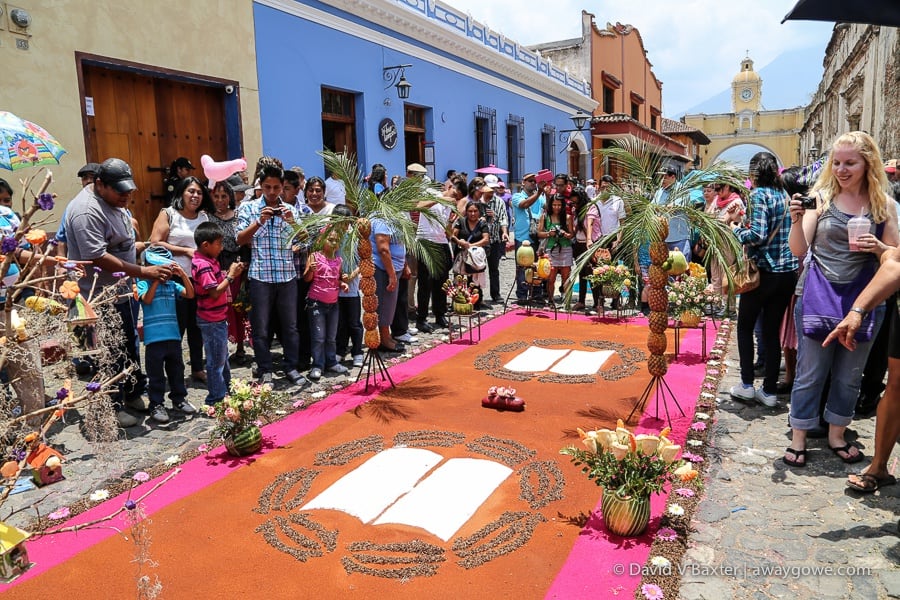
Holy Week in Antigua is a constant display of creative and destructive forces. Alfombras are continuously being finished, sometimes minutes ahead of a procession, and destroyed (by the procession) — a poignant reminder that nothing in the material world is meant to last for long, and yet our entire being is oriented toward creation.
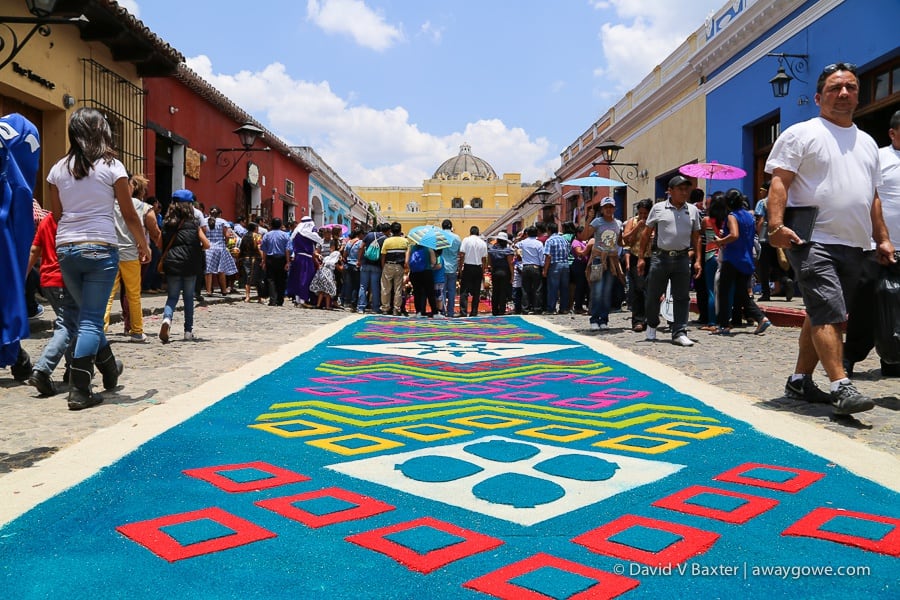
As alfombras are finished, crowds gather to admire the work of the creators — if only for a moment — before moving on to the next freshly completed work of art.

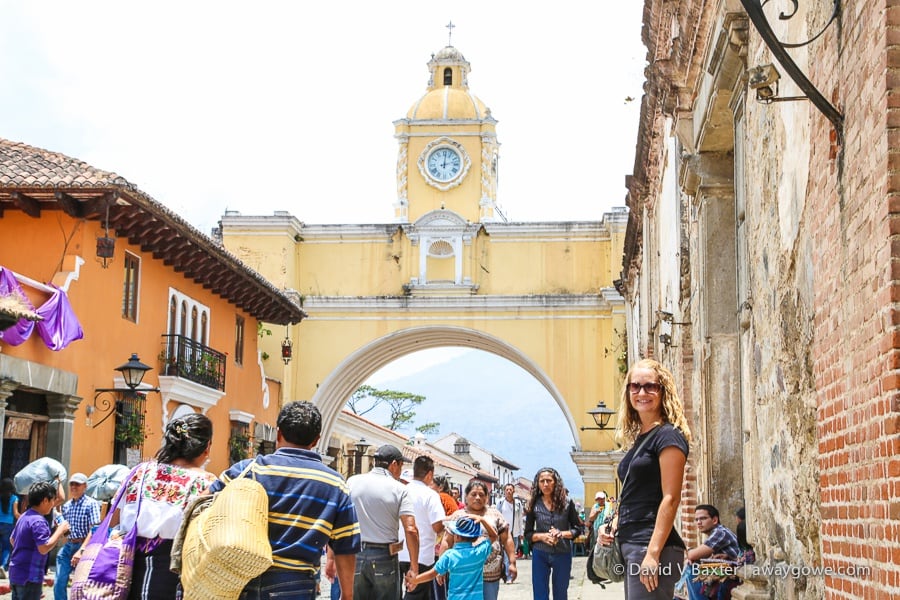
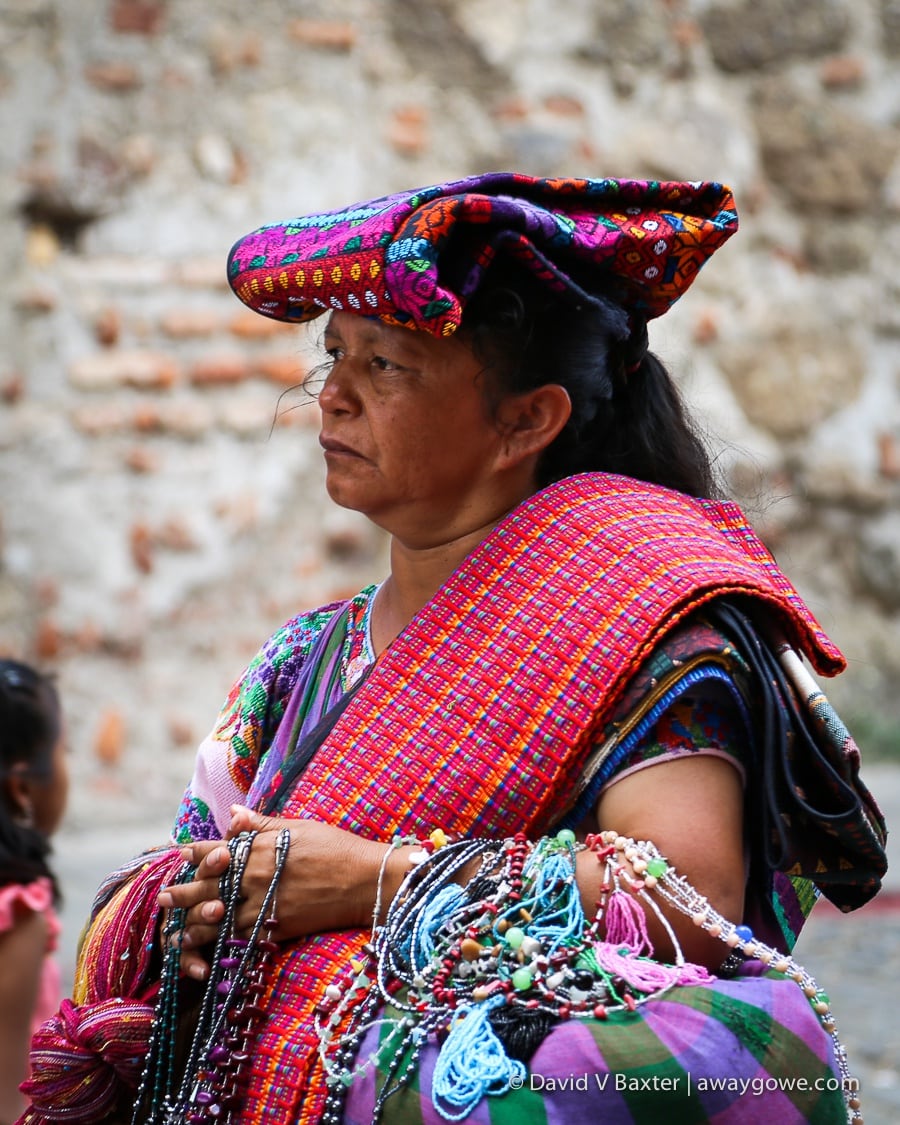
All the while, vendors hawk their wares in the streets to observers and passersby.
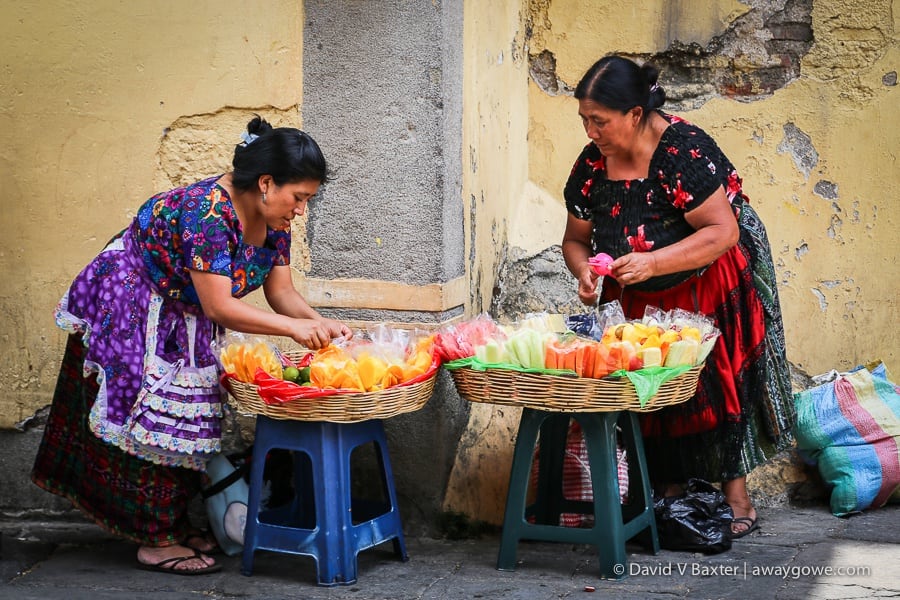
These women are selling a colorful assortment of sliced fruits in baggies, a common street snack in Antigua.
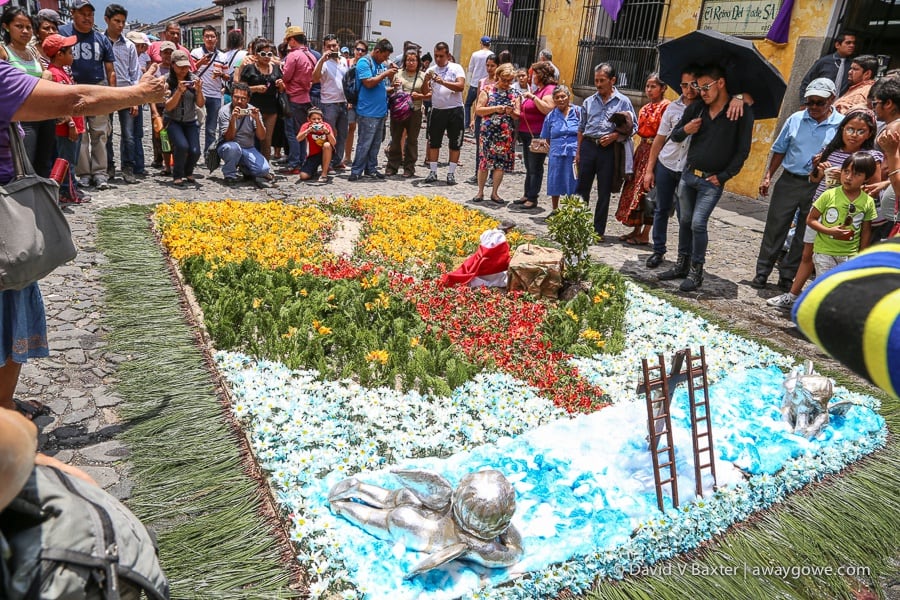
Some alfombras resemble plush carpets with intricate designs, while others tell an Easter story aided by props and figurines, with Christ or the Virgin Mary as the focus.
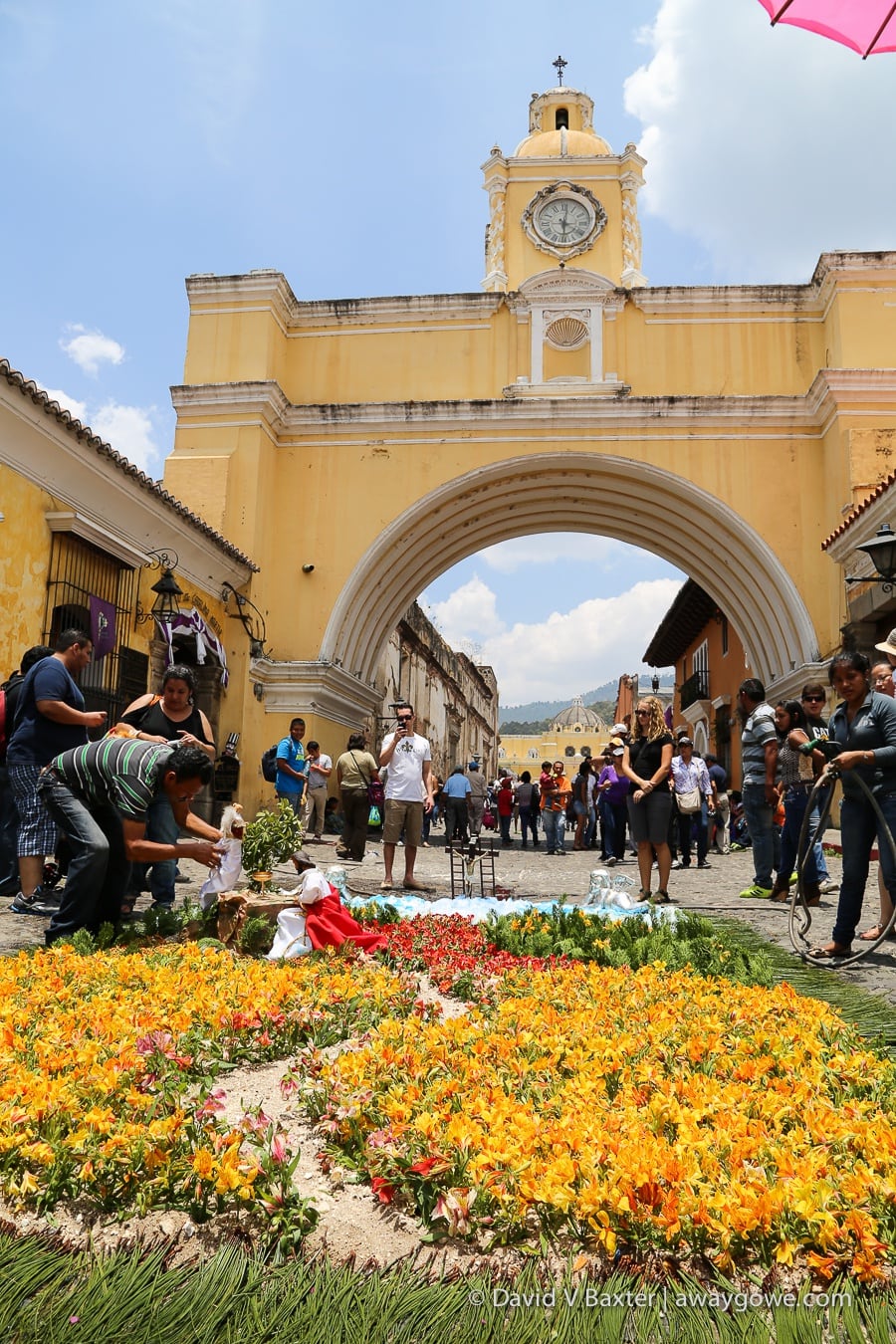
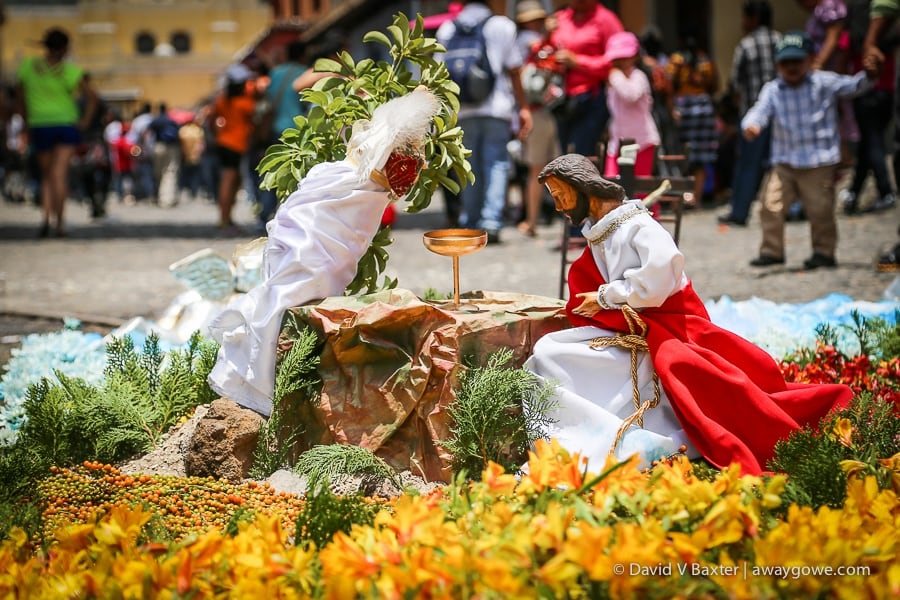
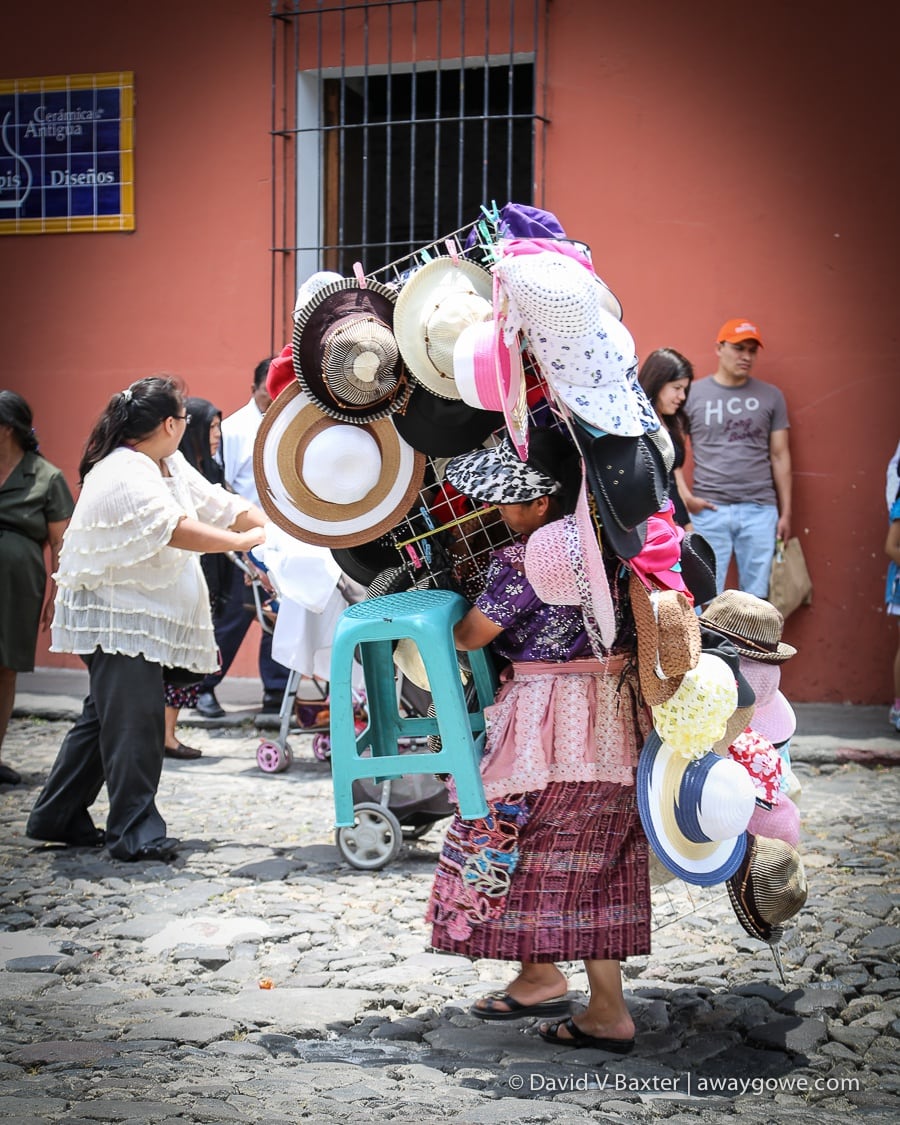
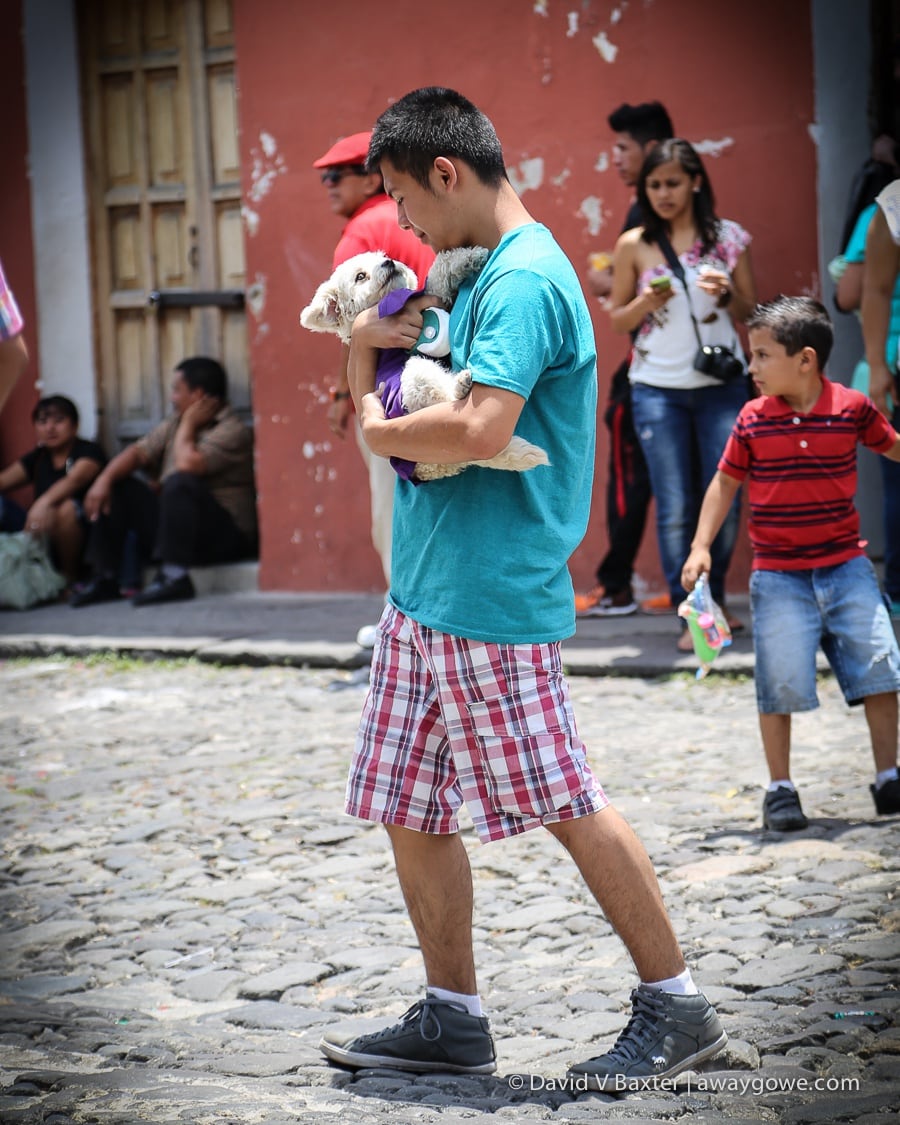
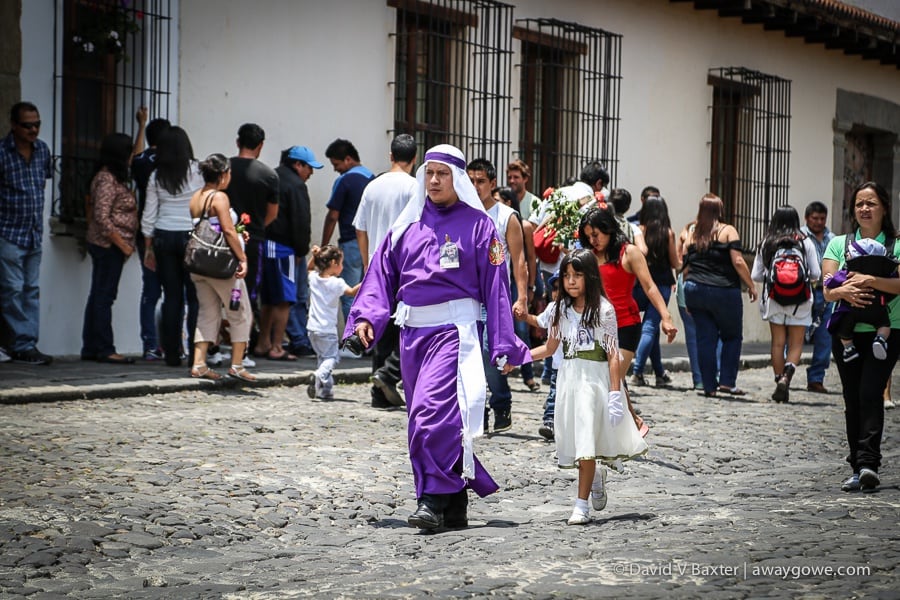
It is considered a great honor for residents to be selected to participate in the processions — the greatest honor being one of a dozen or so individuals carrying the 2-ton “anda” adorned with Christ, which usually comprises the focal point of the procession. As the processions continue almost around the clock, it is common to see dozens of processioners coming and going at any given time.
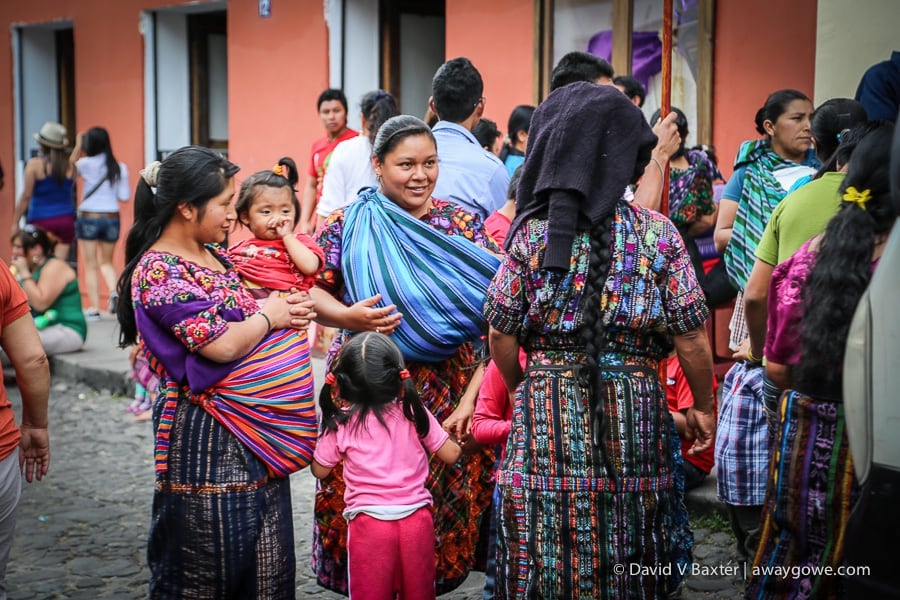
Villagers arrive in droves from the countryside to take part in the festivities or sell their goods. Many will “commute” throughout the week from the highlands, while others stay with relatives in the valley.
